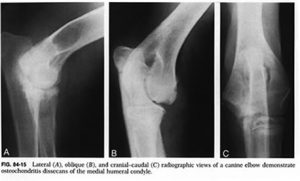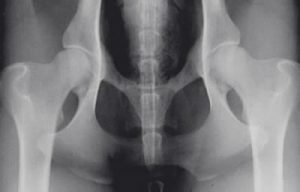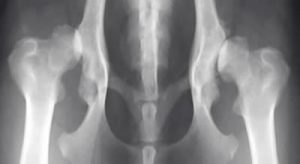Health Sub Committee
The sub committee was formed in 2005. Dr Jeff Sampson of the Kennel Club suggested that there should be a small group of Labrador enthusiasts who would meet with him at least annually. Health topics of interest to the Labrador breed could be discussed and it would be channel between the KC and labrador breeders to improve the health of the breed. This model has been proven to work in the Golden Retriever & Irish Setter breeds. Dr Sampson would be able to convey up to date information particularly on inherited diseases and members of the sub committee would be able to raise issues for discussion. Dr Sampson would act as an intermediary between the KC and breeders. As can be seen from the minutes many issues have been discussed and the KC have certainly acted on suggestions made by the sub committee especially in relation to the Accredited Breeder Scheme.
Current sub committee members and the Clubs they represent can be found in the table below.
* indicates member is also a Kennel Club Breed Health Co-ordinator (BHC)
| Sub Committee Member | Telephone | Clubs Represented | |
| Fiona Maclean | Email Member | 07795 515199 | Labrador Club of Northern Ireland North West LRC |
| Lynda Heron * | Email Member | 01665 570 631 | Northumberland & Durham LRC |
| Kate Smith | Email Member | 01926 650546 | East Anglian LRC The Labrador Club |
| Elaine Grummitt | Email Member | 01664 820156 | Midland Counties LRC |
| Fiona Braddon | Email Member | 01454 775084 | Yellow Labrador Club West of England LRC |
| Kira Leith-Ross | Email Member | 01287 659574 | Three Ridings LRC Labrador Club of Scotland |
| Kirsty Jones | Email Member | 01591 610054 | Labrador Retriever Club of Wales Cotswold & Wyevern Labrador Club |
| Joy Venturi-Rose * | Email Member | 01428 751125 | Kent Surrey Sussex LRC |
Minutes
20th Jan 2021
4th Jan 2021
2019
2018
2017
2016
2014
2013
22nd July 2012
12th April 2012
2010
2008
2007
2006
2005
Information Proposals
2019
LBC Health Sub Committee Terms of Reference
2014
LBC Health Sub Committee Terms of Reference
Breed Health Co-ordinators Role
2010
Proposal to publish Optigen Results
2008
Health Tests
The Health Sub Committee have compiled a table of all heath tests for inherited diseases currently available for Labradors.
Results for tests where submitted can be found on the Kennel Club Health Test Results Finder.
The document can be read online or downloaded below (click the three dots […] to download or print the documents or please use the expand button ![]() below the document to show the image in full screen).
below the document to show the image in full screen).
Testing
How and where to get DNA tests done:
DNA tests are done on blood or buccal swab, the dog must be identified by microchip or tattoo and the identity of dog should be independently verified by a vet. Each laboratory will specify amount of blood and type of tube required so check this before going to the vet to take blood.
| Laboratories Approved by Kennel Club where results will be published | |
| Canine Genetic Testing (UK) * | Canine Genetic Testing (UK) |
| Embark (USA) * | Embark (USA) |
| Genomia * | genomia) |
| Laboklin (UK) * | Laboklin (UK) |
| MyDogDNA/Wisdom Panel * | wisdompanel |
| Paw Print Genetics (USA) * | Paw Print Genetics (USA) |
| The Kennel Club DNA Testing Services (UK) | thekennelclub |
| Univerity of California Davis | vgl.ucdavis |
| Van Haeringen | vhlgenetics.com |
| VETGen (Paw Print Genetics) (USA) | VETGen (Paw Print Genetics) (USA) |
| Laboratories Under Consideration by the Kennel Club, (so not approved yet) | |
| Animal DNA Diagnostics (UK) | Animal DNA Diagnostics (UK) |
| Animal Genetics (UK) | Animal Genetics (UK) |
| Orivet | |
| University of Utrecht | |
The Kennel Club Breed Health Plan
A comprehensive Breed Health and Conservation Plan & Labrador Action Plan were created in 2020. Both documents can be read online or downloaded below (click the three dots […] to download or print the documents or please use the expand button ![]() below the document to show the image in full screen).
below the document to show the image in full screen).
Labrador Action Plan
Breed Health and Conservation Plan
Health Issues
The following conditions are identified as affecting the Labrador Retriever. Results for tests where submitted can be found on the Kennel Club Health Test Results Finder.
EIC – Exercise Induced Collapse
A syndrome of exercise intolerance and collapse (EIC) has been found in young adult Labrador Retrievers. A comprehensive study is underway to evaluate affected dogs and to try to establish an efficient means of diagnosis as well as to gain some insight into the cause of the collapse.
The gene has been identified and a DNA test is available . Inheritance is autosomal recessive – the abormal gene must be carried by both parents before an affected puppy is produced carrying two copies of the gene.
Affected dogs have been found in both show and field trial lines in many countries The symptoms can vary considerably from no sign of colapse in a diagnosis which has been DNA confirmed to severe intolerance of exercise. Commonly, affected dogs can tolerate mild to moderate exercise, however 5 to 20 minutes of strenuous exercise can induce weakness followed by collapse. The first sign is usually a rocking or forced gait followed by weakness in the rear limbs and the inability to support weight. In some cases, this progresses to forelimb weakness and occasionally to a total inability to move. Some dogs appear to be uncoordinated and lose their balance. While most dogs remain totally conscious and alert, others may appear stunned or disoriented during the episode.
PRA prcd
Progressive Retinal Atrophy is an eye disease in which there is progressive rod cone degeneration which results first in loss of vision in poor light, then to total blindness. The speed of vision loss is very variable with some affected dogs retaining reasonable vision in good light for several years. Age at onset is around 3-5 years. Inheritance is autosomal recessive – both parents must carry the abnormal gene. The gene has been identified and a DNA test is available.
The Health sub committee strongly recommends that at least one parent in any mating must be tested clear. Thus no affected puppies will be produced. The Committee have proposed this to the Kennel Club requesting that they do not register puppies from a mating without a clear parent.
If a DNA test is available – Breeding recommendation
If breeding from a carrier (or affected dog or bitch) they should always be mated to a DNA tested clear dog or bitch (no puppies bred will be affected by the disease but puppies may carry the mutant gene) and the puppies registration documents should be endorsed at the time of KC registration “progeny not eligible for registration” by the breeder so that genetic advice is used prior to any future breeding being carried out.
Hip Dysplasia
The Labrador retriever does have substantial levels of hip displasia but the prevalence is not known.. It is due to the faulty fitting of femoral head and acetabulum. – hip joint. Erosions and osteoarthritic changes occur with increasing age . Severe hip dysplasia causes gait problems and exercise intolerance. Commonly first signs of lameness and ‘bunny hopping’ show at 7-9 months of age. Xray is the only way of making a definite diagnosis- see plates below.
Studies of Hip scores and Pedigrees have shown that HD is partly inherited with the sire having a stronger influence than the dam. Several genes have been identified each implicated in different aspects of the malformation but as yet no DNA test is available.
Exercise, body weight and diet are probably also factors in the disease process,
Currently the only way to reduce the incidence of Hip Dysplasia s to Xray all dogs before they are bred from and submit plates to the KC/ BVA scoring scheme.- details in link below. Maximum score for each hip is 53 and maximum Total score = 106.
The lower the score the better. The average total score for the breed is 15
Examples of perfect normal hips and severe dysplastic hips
Normal Hips Total score 0
Severe Hip Dysplasia – Total score 93
OCD – Osteochondritis Dissecans
Most commonly seen as Elbow Dysplasia but also occurs in Hock and Shoulder Joints. OCD is a degeneration of bone underlying the cartilage layer of joints. It almost always shows up during the growth phase — between six to nine months of age. It may start as an intermittent limp in one leg. Many young dogs with OCD run and play as though nothing is wrong but when they slow down they realize the limb hurts and the limp returns. Contributing factors to OCD include physical impacts, such as jumping off high places, and being overweight. There is thought to be a genetic component but as yet this has, as yet, not been proven. However it has been observed that dogs with abnormal elbow scores tend to produce more affected progeny – thus testing all breeding animals is recommended. Diagnosis is by Xray taking three different views. There is a screening program for Elbows run by KC/ BVA. – plates are submitted for scoring 0 being clear, 1 mild, 2 moderate, 3 severe

EBV Scores
The Health Committee strongly recommend using Estimated Breeding Values EBV published by the KC for Hip and Elbow Dysplasia.
CNM
Centronuclear Myopathy
CNM is a disease where the muscles of the Labrador do not develop properly. Affected pups have missing tendon reflexes as well as less weight gain than others by four weeks of age.
The more obvious symptoms of CNM appear when a pup is between twelve and twenty weeks of age. The pup will begin to stumble and fall when trying to walk. There are difficulties in swallowing since the muscles in the esophagus are affected. Food can then gets into lungs causing pneumonia. The symptoms are typically worse in cold weather. The symptoms remain for the entire life of the dog.
So far, there is no cure for the disease. Medications do not improve the condition since there are missing muscle fibers that will never appear.
This disease has been found in UK Labradors, the majority being in working lines.
EPILEPSY
Epilepsy is a chronic condition characterized by recurrent seizures. Seizures are the result of muscle responses to an abnormal nerve-signal burst from the brain.
Primary or Idiopathic Epilepsy, where fits occur with no known cause, is possibly inherited.
Most dogs with Epilepsy suffer their first seizure between the ages of one and five years. A genetic basis for Idiopathic Epilepsy is strongly suspected in several breeds including the Labrador Retriever.
It is strongly recommended by the LBC Health Committee that dogs suffering from Epilepsy are not bred from
Dwarfism
Research
Various research exists for health issues affecting the Labrador Retriever.
Dogs Life Project
Study by Roslin Institute and Royal Dick Veterinary School, Edinburgh of Labrador Puppies born 2010-12 and followed into adulthood.
To identify the most common diseases in labradors and attempt to estimate incidence and prevalence.


